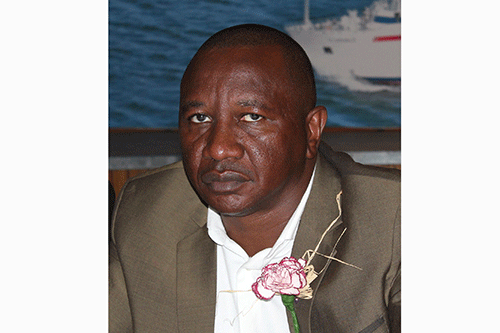WALVIS BAY – An environmental scientist has spectacularly claimed the real threat to the marine ecosystem comes from the fishing sector, which, he argues, has never undergone an environmental impact assessment despite being responsible for the collapse of several fish species and seabirds.
Namibian Chamber of Environment CEO Chris Brown expressed this view while responding to a statement by the chairman of the Confederation of Namibian Fishing Associations (CNFA), Matti Amukwa last week. The latter is questioning the integrity of Brown, who has indicated that it is safe for Namibia to venture into phosphate mining.
The fishing industry and the mining sector have been at loggerheads since 2011 after Namibia Marine Phosphate (NMP), jointly owned by Namibian businessman Knowledge Katti and Omani businessman Tariq Al Barwani, was issued a licence to explore phosphate mining. The fishing industry has been opposing the development ever since, saying Namibia is venturing into an unknown area, with the potential of jeopardising over 16 000 jobs created by the fishing sector. “Brown and the environment chamber are clearly out of touch with what is happening in the rest of the world, where New Zealand and Mexico have both studied and rejected the prospect,” Amukwa said in a statement. “Others, such as Mauritania and Guinea, are paying a high price for having given the nod to phosphate mining.”
However, Brown feels the fishing sector is the real threat to the marine ecosystem.
He believes it is their territory, despite not being subjected to an environmental impact assessment.
“They are the real threat, compared to this tiny mining operation. The footprint of the proposed marine phosphate mining in ML 170 is 34 square kilometres over 20 years, on average 1.7 square kilometres per year. By contrast, the estimated area of seabed disturbed by bottom trawling fishing vessels is estimated to be at least 18 500 square kilometres per year. They are responsible for the collapse of the orange ruffy, pilchards and seabirds. “They don’t undergo environmental impact assessments, but are calling for more and more studies into phosphate mining,” he charged. He added
that there is a lack of transparency in the marine sector, which is a real problem. Hence, the sector needs to understand that there is no conflict between the fishing industry and the marine phosphate industry. “All the science-based independent studies and independent reviews show this. However, the fishing sector feels that the marine ecosystem is their territorial space,” he stated.
According to Brown, marine phosphate mining and fishing are two activities that can operate side-by-side with virtually no conflict, to more than double the current economic returns and jobs provided by the blue economy. “This view is also expressed within the Marine Spatial Planning documents, derived from a process totally independent of the marine phosphate mining EIA. I would encourage the CNFA to engage with the EIA process to understand the science, and to keep an open mind so that Namibia’s development is not limited by misinformation of preconceived ideas,” Brown continued.
Despite strong objections from the fishing industry, the NMP plans to mine the seabed off the coast of Walvis Bay. This follows after the High Court declined to invalidate a mining licence awarded to them in 2011 after the fishing sector petitioned to have the company’s licence declared invalid.
The Marine Spatial Planning documents, a guiding tool that ensures the right marine activity takes place at the right area and which is also responsible to facilitate the development of a statement, will soon release the final document as to whether and how seabed mining and fishing can co-exist.


